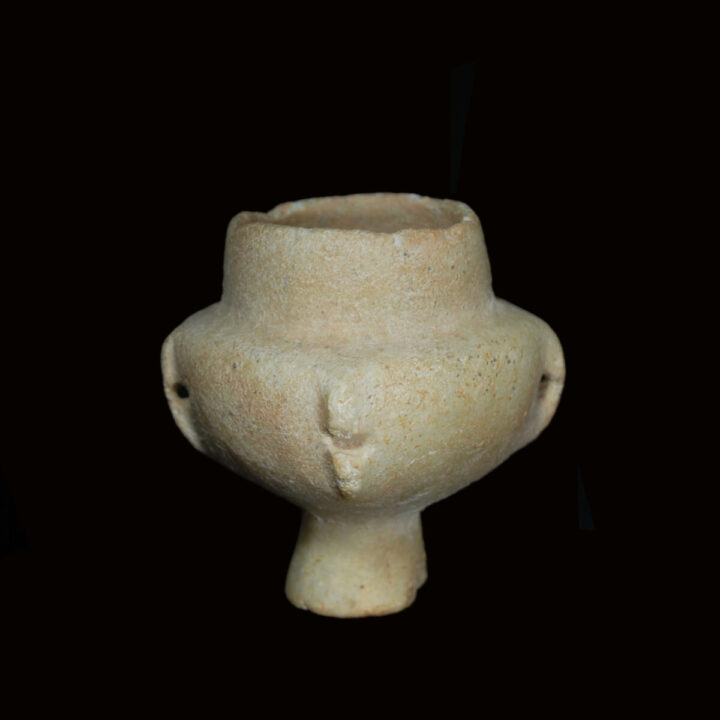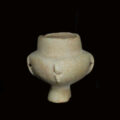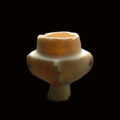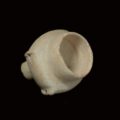Cycladic Marble Kandila
Culture: Greek/Cyclades
Period: Early Cycladic, 3000-2800 B.C.
Material: Marble
Dimensions: 8.9 cm high
Price: 12 000 Euro
Ref: 2606
Provenance: With Münzen und Medaillen Basel, catalogue 51, 1975, no 9. Thence in a German private collection.
Condition: Unrestored. Foot and two suspension lugs worn in ancient times. Chips on the rim.
Description: Small, but particularly elegantly formed Cycladic marble kandila. The hemispherical body stands on a slender, conical foot, which has a concave ring-shaped cutout on the inside. Outside on the body are four pierced ribs, where the vessel could be suspended. The shoulder is horizontal and merges into the thin-walled, translucent neck, which is slightly curved inwards. See for the type of this small, elegant form of a kandila the example in the Metropolitan Museum of Art with the Accession Number L.2022.38.91, which is attributed to the Kandila Sculptor B. The inhabitants of the Cyclades formed in the Early Bronze Age the white marble of their islands to the famous idols and to these stone vases, whose shape has remained unique. The exact function of the kandilas (they are named after the hanging lamps in Greek churches, to which they resemble) remains a mystery to this day. What is certain is that their production required an enormous amount of labour. The marble block was hollowed out not with metal tools, but with stone, bone, and wooden tools.






